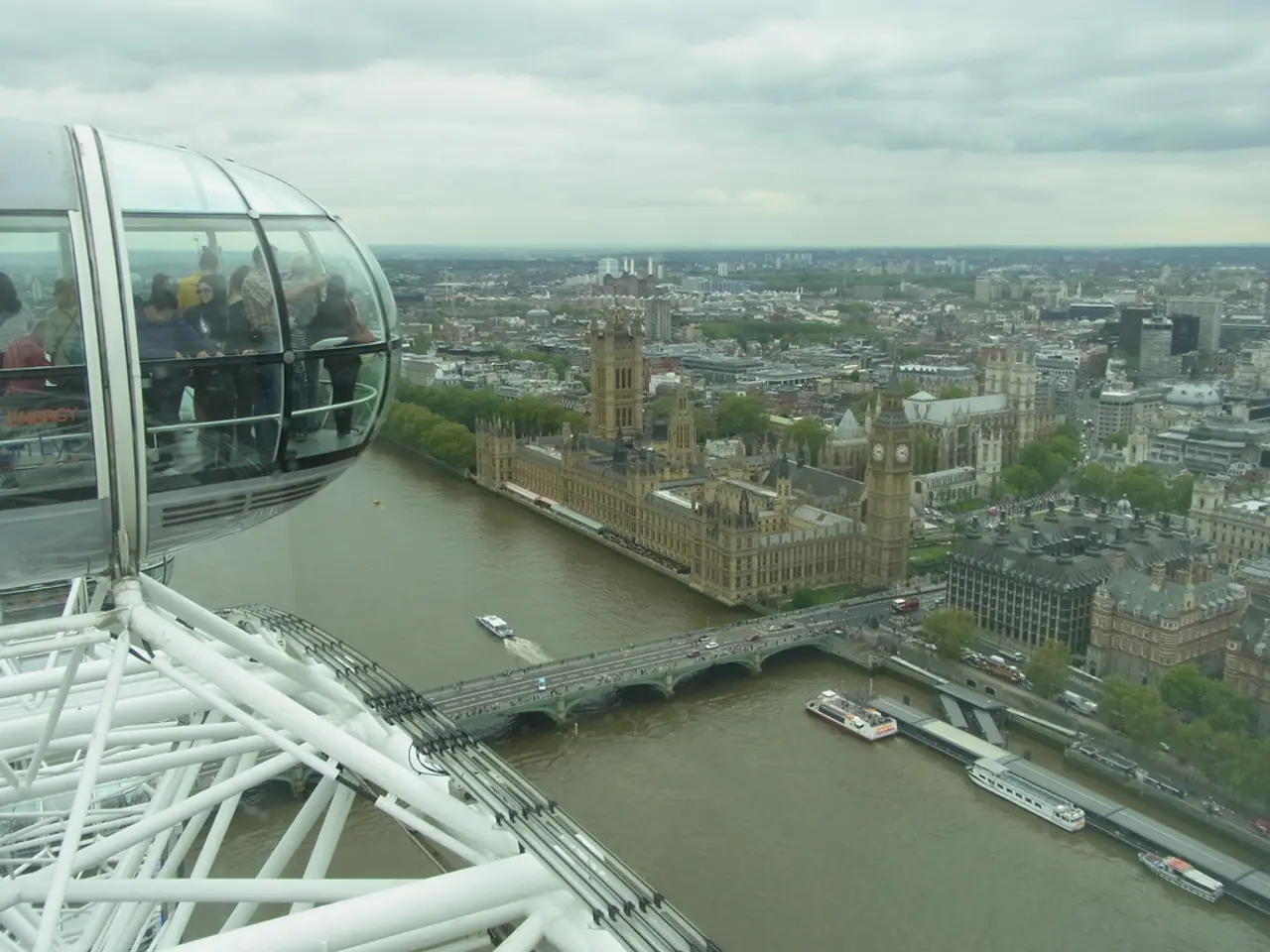Charles III Converses with Modi Post Notable India-UK Trade Agreement
The India-UK Free Trade Agreement (FTA), signed on July 24, 2025, marks a significant milestone in bilateral trade and economic cooperation. This landmark deal, the UK's fourth post-Brexit and India's first major FTA in over a decade, is set to boost trade growth from approximately $56 billion to $120 billion by 2030[1][3].
Addressing the press, UK Prime Minister Keir Starmer described the trade deal as the "most significant since Brexit." Indian exports such as textiles, seafood, processed foods, and engineering goods will face near zero import duty into the UK, enhancing market access for labor-intensive sectors[2][3]. In return, the deal reduces UK tariffs on imports like Scotch whisky, cars, lamb, and confectionery, with average duties falling from 15% to 3%[1][4].
The FTA covers a wide scope beyond tariff reductions. It includes chapters on services, digital trade, telecommunications, financial and professional services, labor mobility, environmental cooperation, and support for Small and Medium Enterprises (SMEs)[2]. The agreement incorporates progressive chapters on labor rights, gender equality, anti-corruption, and developmental cooperation, reflecting a modern and socially-conscious approach to trade[2].
The success of the India-UK FTA will hinge on effective implementation, public accountability, and balancing economic growth with social and environmental accountability. The UK projects a 60% increase in exports to India by 2040, adding approximately £15.7 billion (US$21.3 billion), while bilateral trade could rise by 39% (£25.5 billion or US$34.5 billion) annually compared to projections without the deal[1].
However, certain challenges lie ahead. Some Indian industries, particularly automobile and certain manufacturing sectors, may face heightened competition due to tariff cuts, raising fears about the impact on domestic producers and employment[2]. The absence of sunset clauses means protections are indefinite, which some argue could expose vulnerable sectors unnecessarily.
The deal awaits ratification by the UK Parliament, a process expected within the next 6-12 months. Indian Prime Minister Narendra Modi lauded the deal as a "blueprint for our shared prosperity," stressing the historic and cultural bonds between the two nations[5]. The agreement opens public procurement markets, digital trade, intellectual property rights, and service sector collaboration for India, providing substantial access for MSMEs and Indian exporters[2].
Despite the potential criticisms, the India-UK FTA represents an ambitious, multifaceted agreement aimed at deepening economic ties through extensive tariff liberalization, expanded cooperation in services and social standards, and fostering long-term growth and strategic partnership[1][2][3][4]. The deal is projected to generate £4.8 billion annually in economic gains and attract £6 billion in investment.
References:
[1] BBC News. (2025, July 24). India-UK sign free trade deal worth £120bn. BBC. https://www.bbc.co.uk/news/business-62654960
[2] The Guardian. (2025, July 24). India-UK free trade deal: what is in it and what does it mean? The Guardian. https://www.theguardian.com/business/2025/jul/24/india-uk-free-trade-deal-what-is-in-it-and-what-does-it-mean
[3] The Economic Times. (2025, July 24). India-UK FTA: Key takeaways from the landmark deal. The Economic Times. https://economictimes.indiatimes.com/news/international/business/india-uk-fta-key-takeaways-from-the-landmark-deal/articleshow/92537141.cms
[4] The Financial Express. (2025, July 24). India-UK Free Trade Agreement: Key highlights and benefits. The Financial Express. https://www.financialexpress.com/economy/india-uk-free-trade-agreement-key-highlights-and-benefits/2545645/
[5] NDTV. (2025, July 24). India-UK Free Trade Agreement: Modi hails deal as 'blueprint for our shared prosperity'. NDTV. https://www.ndtv.com/india-news/india-uk-free-trade-agreement-modi-hails-deal-as-blueprint-for-our-shared-prosperity-3411339
- The India-UK Free Trade Agreement, a significant milestone in diplomacy, includes progressive chapters on labor rights, gender equality, and developmental cooperation, reflecting a modern and socially-conscious approach to trade.
- The extensive tariff liberalization in the India-UK Free Trade Agreement aims to boost trade growth from around $56 billion to $120 billion by 2030, and may lead to a 60% increase in UK exports to India by 2040.
- The India-UK Free Trade Agreement covers a wide scope, including chapters on services, digital trade, telecommunications, financial and professional services, labor mobility, environmental cooperation, and support for Small and Medium Enterprises (SMEs).
- The success of the India-UK Free Trade Agreement will be influenced by effective implementation, public accountability, and balancing economic growth with social and environmental accountability, as it opens public procurement markets, digital trade, intellectual property rights, and service sector collaboration for India.
- The India-UK Free Trade Agreement faces potential criticisms, as some Indian industries might face heightened competition and the absence of sunset clauses could expose vulnerable sectors unnecessarily, raising concerns about the impact on domestic producers and employment.







